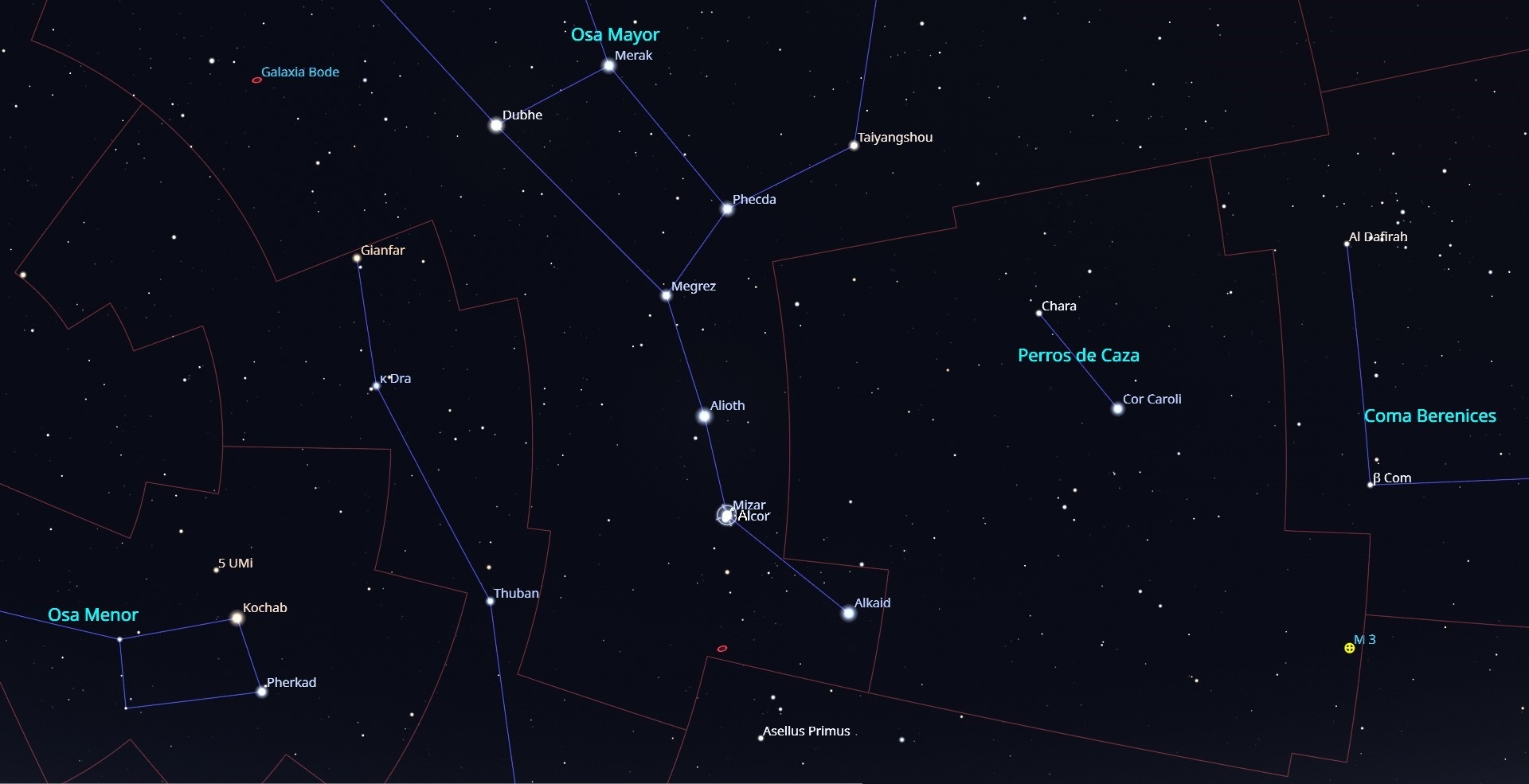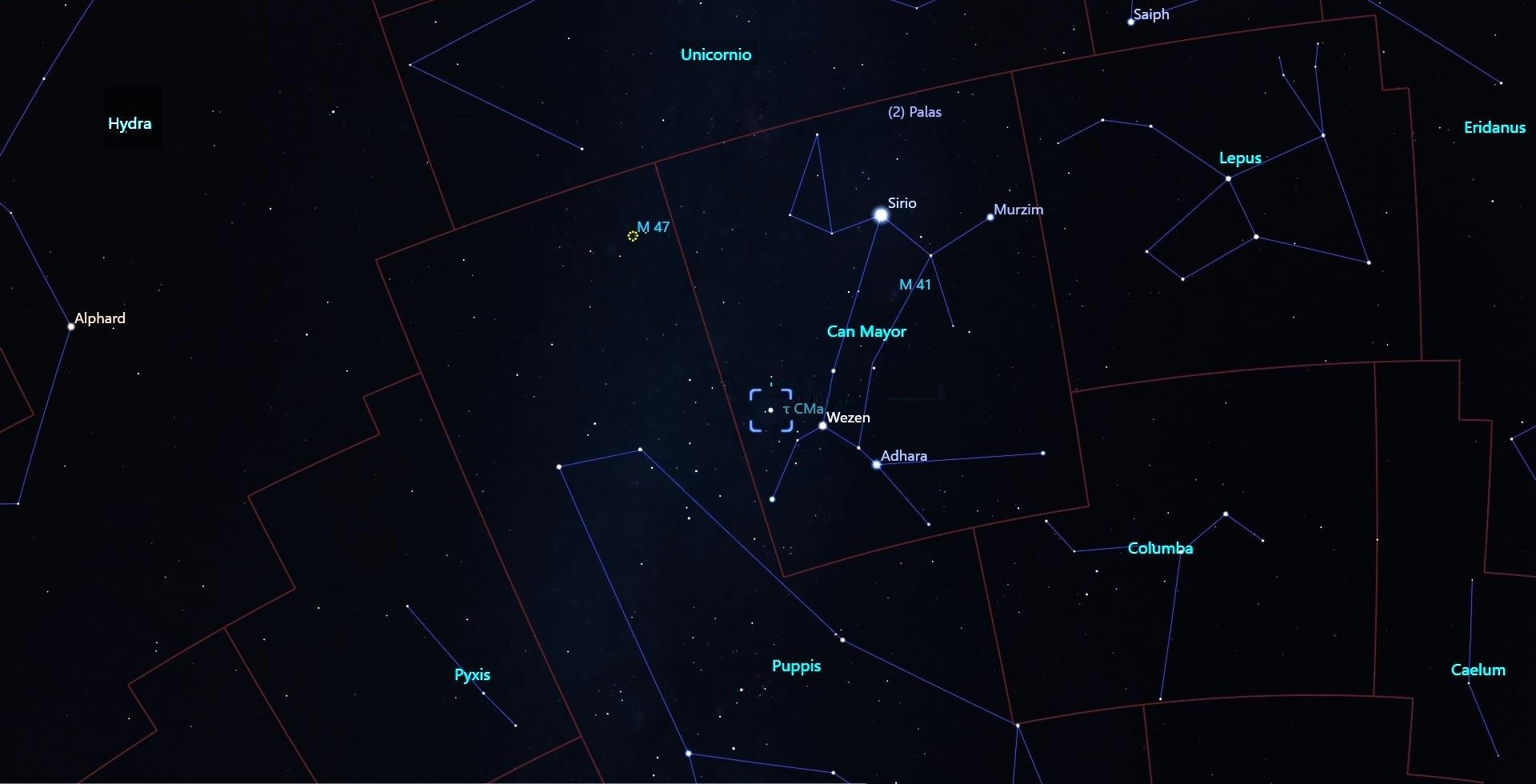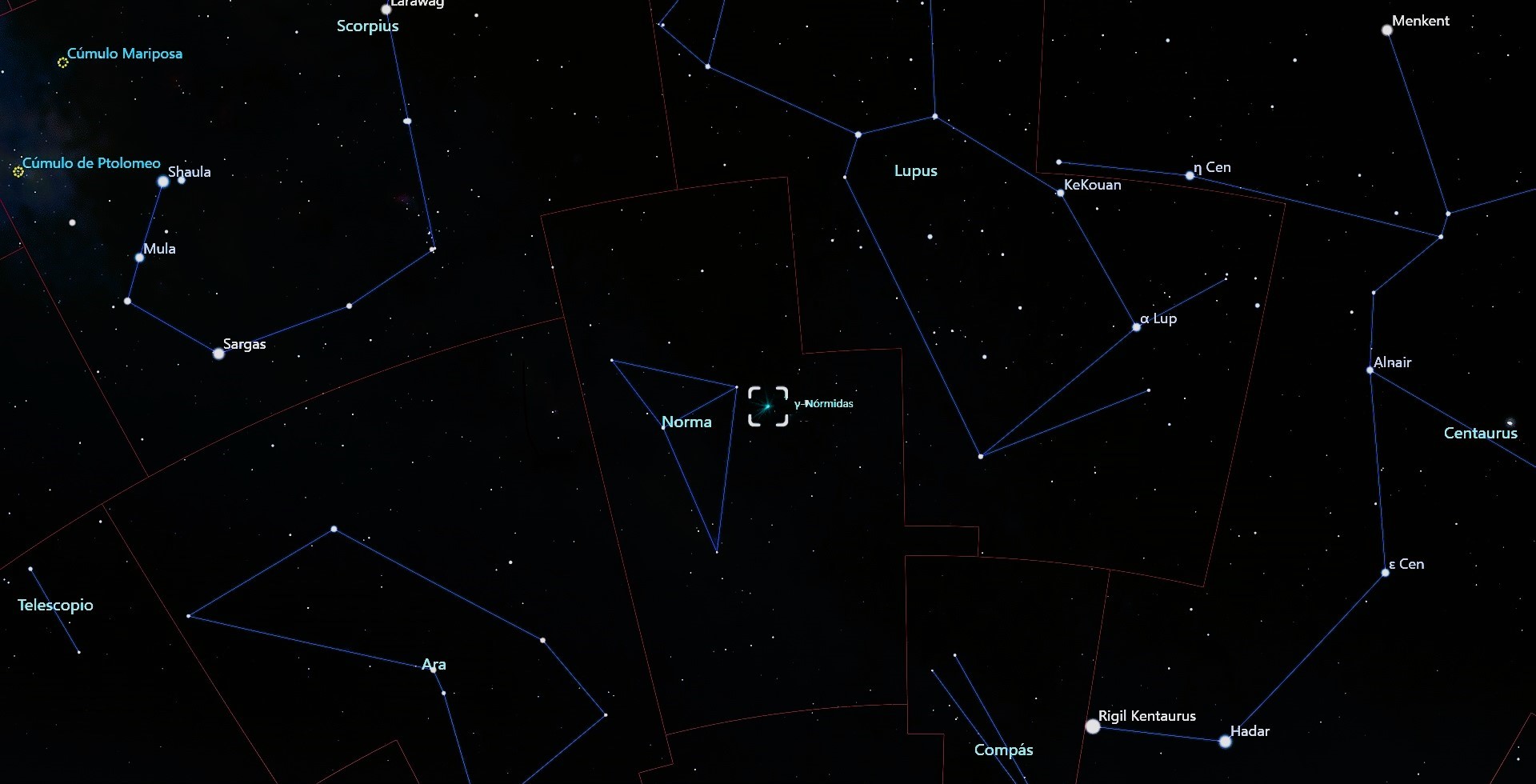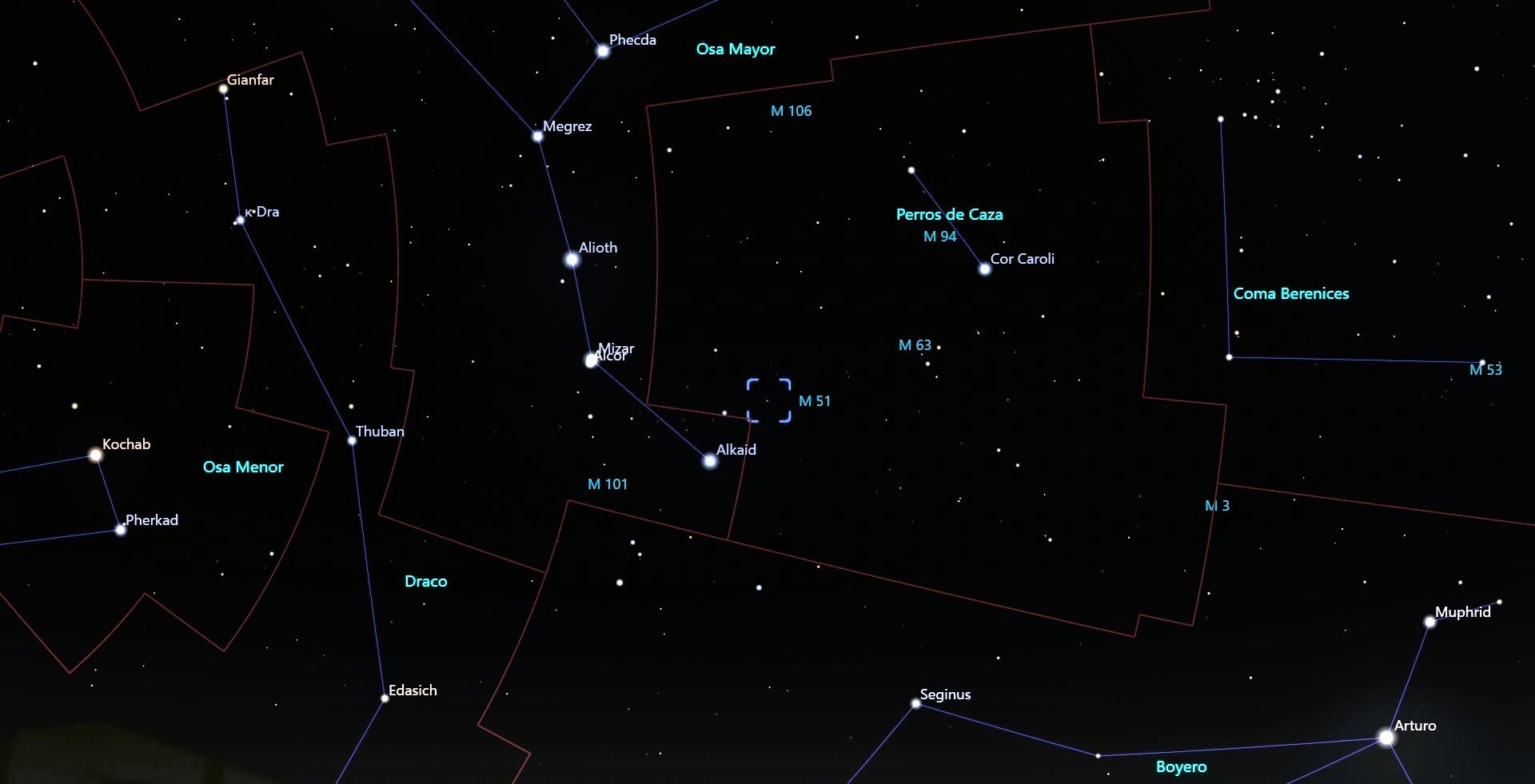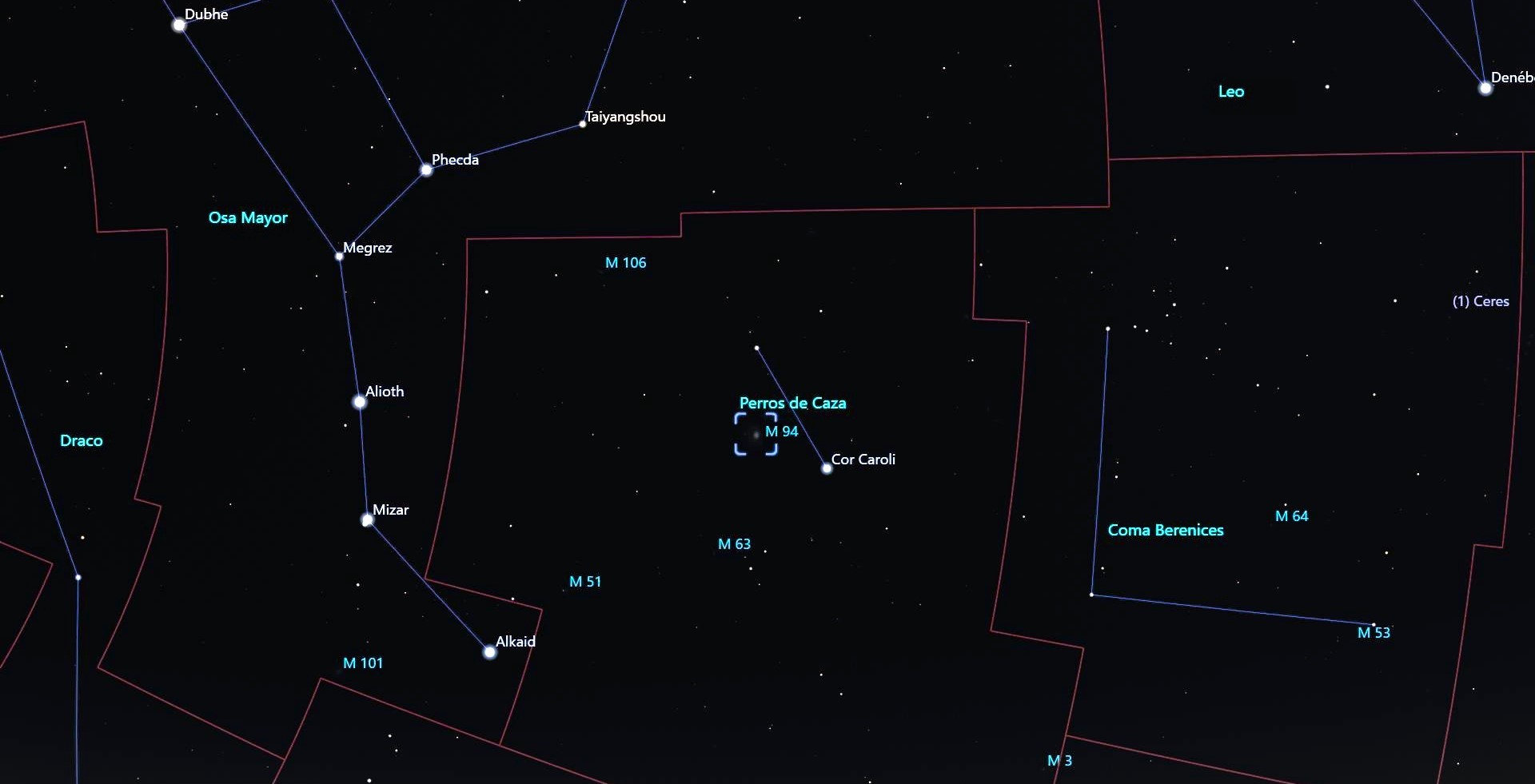Astronomical events of the month of March 2023
The month of March has arrived, a moment in which it seems that everything is reborn; We will tell you when and at what time spring enters. This month we have one more death anniversary of Isaac Newton, so we will make a brief portrait of this great scientist. We present you with a multiple stellar system (Mizar and Alcor), a very young open cluster ? CMa, a discreet meteor shower and a double challenge of the month, with the Messier objects M51 and M94; Of course, the ephemeris of the Moon cannot be missing.
Goodbye to the cold winter
The spring equinox is an astronomical ephemeris in which the Sun is directly over the equator and the duration of day and night is practically the same in all places on Earth. In the northern hemisphere, the spring equinox will occur on March 20 at 9:24 p.m. Universal time, that is, on March 20 at 3:24 p.m. in central Mexico; Meanwhile, for the southern hemisphere, autumn will be beginning.
And it all started with the fall of an apple
Sir Isaac Newton was born on December 25, 1642, in Woolsthorpe, Lincolnshire, England and died on March 20, 1727, in Cambridge, Cambridgeshire, England; perhaps the greatest of English astronomers. He was a great physicist and mathematician who built the first reflecting telescope and generator of the law of universal gravitation. Author of Philosophiae Naturalis Principia Mathematica, one of the most important texts ever written, in which Newton's laws of motion and universal gravitation are described in an elegant communion between mathematics and physics that led to the theory of Classic Mechanics. The simplicity of the theory has allowed astronauts to be sent to the Moon and robotic equipment to virtually the entire solar system.
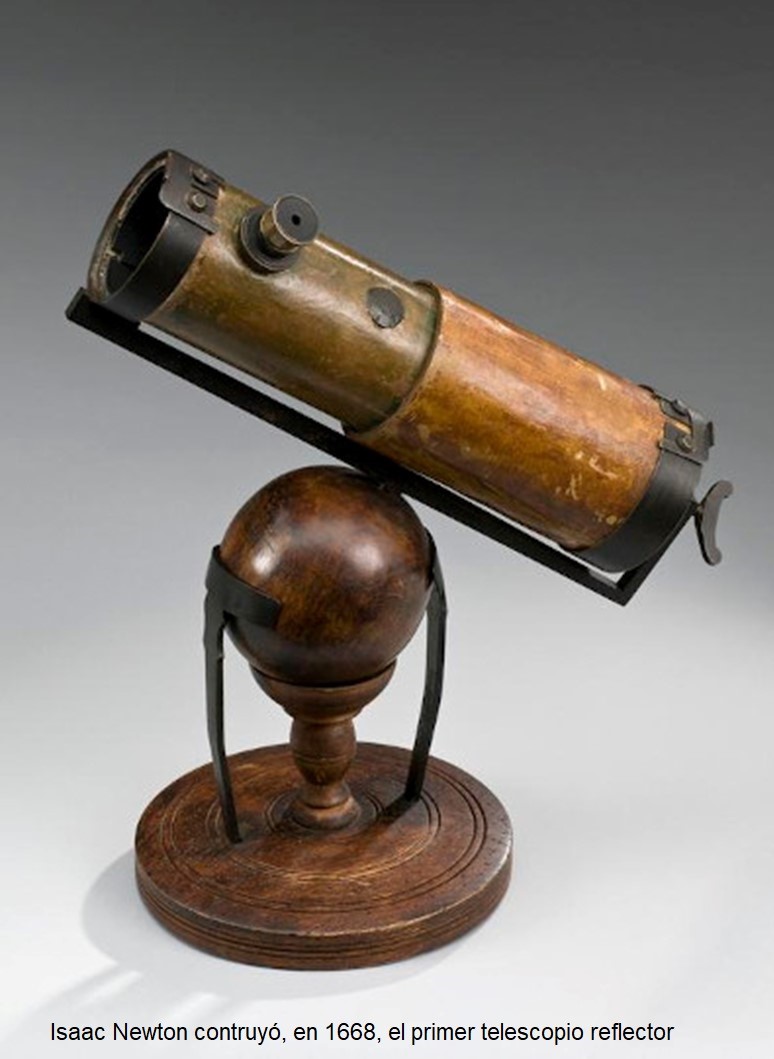
A multiple star system
Most stars are not born alone and are often found in clusters, even over time. They are associated with multiple stellar systems, they can be double, triple, quadruple and even in large star clusters.
The first double star was discovered by Benedetto Castelli in 1617. Galileo's disciple pointed his telescope towards the stars of the Big Dipper and observed Mizar and Alcor located at a distance of 78.1 and 81.1 light years, respectively, and that in the sky they appeared to be very close to each other, separated by 11 minutes and 48 arc seconds in the sky. In later studies carried out in 1889 by the astronomer Edward Charles Pickering, it was discovered, with better instruments and techniques, that the star Mizar had, in turn, a companion that he named Mizar B; later, in 1908, a weak companion of Alcor was observed which they named Alcor B; more recently, in 2009, further studies were conducted and it is believed that other members may exist, contributing to the multiplex system.
The Mizar and Alcor system is easily identifiable, directing the gaze towards the constellation Ursa Major, in what would be the central part of the tail. With some binoculars or a small telescope it will be enough to observe this system.
A very, very, young open cluster
This open cluster located in the constellation Canis Major, identified as Tau Canis Majoris (? CMa or NGC 2362), was discovered by Giovanni Batista Hodierna in 1654 and included in his book "De Admirandi Coeli Carateribus", it is located about 5,100 years ago. light distance, with a magnitude of 3.8, angular size of 6 minutes of arc and is one of the youngest open clusters known, only 5 million years old.
The protagonist of the cluster ? CMa is, precisely, the star ? CMa, a blue supergiant star of apparent magnitude 4.37, located about 4,800 light years from Earth; which at first appears to be a triple system, but is surrounded by at least 4 other components and its integrated luminosity is around 500,000 times that of the Sun, suggesting that this spectacular cluster has average masses of 20 solar masses.
Due to its great brilliance, this cluster is easily identifiable towards the part of the tail of Canis Mayor. With binoculars or a small telescope you can enjoy a pyramidal structure made up of fainter stars.
? Normid meteor shower
Although this meteor shower is not one of the most spectacular, since it will only have a maximum of 6 fleeting meteors per hour, it will be active between February 25 and March 28, with its maximum on March 15. The radiant is in the direction of the constellation Norma. The object that causes this rain has not been determined, but it is known that it will reach its maximum activity around 4:00 p.m. on March 14, so the best displays could be seen at sunset on March 14 and early morning on March 15. , towards the south-southeast part of the celestial sphere.
A very picturesque galaxy
This month gives us the opportunity to appreciate one of the most beautiful images of a galaxy, the galaxy M 51, also known as the Whirlpool Galaxy or NGC 5194. It was discovered by Messier in 1773 and is associated with a smaller galaxy, NGC 5195. , about 4'35" arc minutes apart. This exquisite galaxy was the first to show us a spiral structure and a large amount of interarm matter, generating intense star formation. It is located only 23 million light years away and has a diameter of 65 thousand light years, resulting in an angular size of 11 minutes of arc and a brightness of 8.1 in apparent magnitude, which added to the weather conditions of this month, It is very feasible to locate and observe with binoculars or with small telescopes, most of the nights, in the direction of the constellation of the Hunting Dogs, towards the northeast of the celestial sphere.
The fascinating island universe M94
The spiral galaxy M94, also known as the Crocodile Eye or NGC 4736, was discovered by the astronomer Pierre Méchain in 1781. The galaxy M94 is classified as a Sab spiral galaxy, with more or less closed arms and a bright nucleus surrounded by a zone annular with intense star formation and, a little further out, a ring of yellowish evolved stars. It is located in the direction of the constellation of the Hunting Dogs, about 16 million light years away, with an approximate diameter of 30,000 light years and an apparent magnitude of 8.2. Given its relatively high brightness, this galaxy, together with M51, M63 and M106, form an attractive challenge for amateur astronomers. If you have binoculars or a small telescope, you will only have to point them towards the northeast of the celestial sphere.
Phases of the Moon (Central Mexico time).
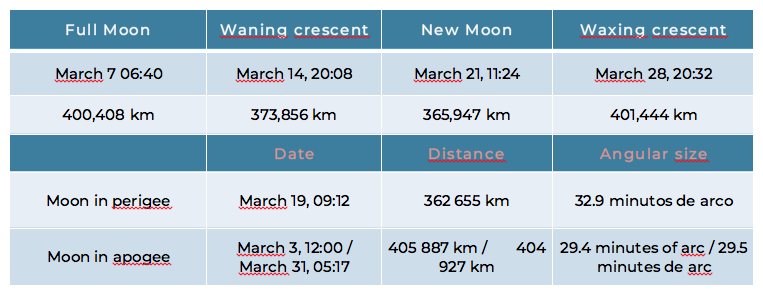
Watch the video: https://youtu.be/-ylC_cnOUIs
Contacts:
Dr. Agustín Márquez Limón (amarquez@inaoep.mx), Coordinación de Astrofísica-INAOE
Dr. Vicente Hernández Hernández (planetariodecozumel@gmail.com), Red de Planetarios del Estado de Quintana Roo
Dr. Raúl Mújica García, (rmujica@inaoep.mx), Coordinación de Astrofísica-INAOE y Noche de las Estrellas
Luis Enrique Erro # 1, Tonantzintla, Puebla, México, Código Postal 72840, Tel: (222) 266.31.00, difusion@inaoep.mx
This work is licensed under a Creative Commons Attribution-NonCommercial-NoDerivs 2.5 Mexico License.


